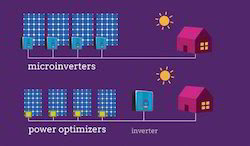Agricultural Tractor: Integrating Connectivity Of Smart Systems On The Farm
 |
| Agricultural Tractor. |
In the ever-evolving landscape of
modern agriculture, the integration of connectivity and smart systems has
revolutionized the way farmer’s opiate, and at the heart of this transformative
change is the Agricultural Tractor. Long gone are the days of traditional
farming practices; today's tractors are equipped with cutting-edge technologies
that enhance productivity, efficiency, and sustainability on the farm.
At the forefront of this
technological revolution is the seamless integration of connectivity into Agricultural Tractor. By incorporating
advanced sensors, global positioning systems (GPS), and internet connectivity,
these smart tractors can communicate, analyze, and share crucial data in
real-time.
According to Coherent Market Insights the Agricultural
Tractor Market was estimated at USD 67020 million in 2021, and from 2022 to 2030, it is
predicted to increase at a compound annual growth rate (CAGR) of 6.5%.
One of the key advantages of
integrating connectivity into Agricultural
Tractor is the access to a vast array of data that was previously unavailable.
Smart tractors can gather data on soil conditions, weather patterns, crop
health, and machinery performance. This data is then transmitted to the cloud,
where it is processed and analyzed using sophisticated algorithms and
artificial intelligence. By leveraging this wealth of information, farmers can
gain valuable insights into their operations, enabling them to implement
precision agriculture techniques.
Precision agriculture, made
possible by the connectivity of smart systems, allows farmers to tailor their
practices to specific areas of their fields. For instance, by using GPS-guided
tractors, farmers can ensure precise seed placement, fertilizer application,
and irrigation, resulting in optimal crop growth while minimizing resource
wastage. This not only boosts productivity but also reduces the environmental
impact of farming, making it a more sustainable practice.
Furthermore, the integration of
connectivity in Agricultural Tractor
enhances equipment management and
maintenance. Remote diagnostics enable farmers to monitor the health and
performance of their tractors in real-time. In case of any issues or anomalies,
alerts are sent to the farmers' smartphones or computers, allowing them to
address the problems promptly. This proactive approach minimizes downtime,
improves efficiency, and ultimately saves both time and money.
The connectivity of smart systems
also facilitates seamless communication between tractors and other machinery or
implements on the farm. This interoperability allows for more efficient task
coordination, reducing overlap and ensuring smoother operations. Additionally,
with the advent of autonomous tractors, the potential for even greater
coordination and optimization of farming tasks becomes a reality.
Autonomous
Tractor are the vehicles used in farms that are driven by an
intelligent system that guides them for proper operation. Since there are no
buildings to run into in large farm regions, driverless vehicles are used
there. They are also used to aid farmers in the finest crop production.
In conclusion, the integration of
connectivity and smart systems into Agricultural
Tractor has ushered in a new era of precision agriculture. By harnessing
the power of data and technology, farmers can make data-driven decisions,
optimize their farming practices, and achieve higher levels of productivity and
sustainability. As these technologies continue to evolve, the future of
agriculture looks promising, with smart tractors leading the way towards a more
efficient, connected, and sustainable farming industry.

Comments
Post a Comment